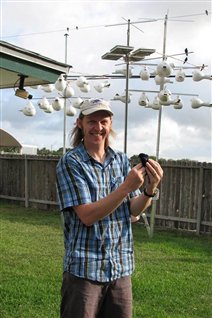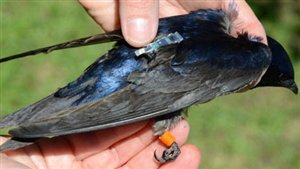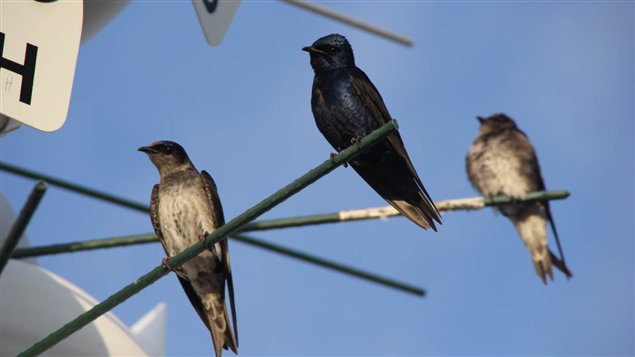For the past many years in Canada, spring has been coming earlier than its historical average as the climate seems to be changing. This year, in an even more unusual change, winter and cool weather hung on much longer than historical average. For migratory birds who winter far away in Central and South America, an earlier, warmer spring in North America, or worse, irregular spring weather arrivals, poses a threat.
Kevin Fraser is a post-doctoral fellow in the biology department at York University in Toronto. He’s been studying the effects of climate change on migratory birds, more specifically Purple Martins.
Listen
For many years the populations of migratory insectivores, like Martins, swallows, and songbirds seem to be declining. While pesticides like DDT were the culprit in decades past, their subsequent restrictions reduced the toll on birds. However now a new theory has emerged, that migratory birds are coming back to N.American at their “programmed” date only to find that spring arrived earlier and the important early peak for catching insects has passed. This means a reduction in food and energy supply and fewer fledglings.
He’s calling this an arrival mismatch.
Dr Fraser has been focusing primarily on Purple Martins and their habits in order to determine to what extent they are, or they can, adapt to changing climate conditions.
He’s also studying what “cues” they are finding along the way to inform them that spring is earlier, or in this year’s case, later than historical average, and how they react to those clues if any.
To do this, he’s been fitting the birds with tiny geolocators strapped to their backs to track movements.

His study, “A Trans-Hemispheric Migratory Songbird Does Not Advance Spring Schedules or Increase Migration Rate in Response to Record-Setting Temperatures at Breeding Sites”, published in the journal PLOS ONE, tracked the spring migration of purple martins over five years from the Amazon basin to two breeding sites in eastern North America.
Dr Fraser says that migratory birds have been programmed for eons to depart wintering grounds in the south in order to arrive at breeding grounds in the north based on historical climate averages.
His studies show the birds’ departure dates from winter habitats, and their arrivals at breeding grounds in the north, are surprisingly consistent regardless of the climate and conditions in Canada and other northern breeding grounds.
If the birds can’t adapt, or can’t adapt quickly enough, it is possible that some species populations, or even many, may be seriously affected.







For reasons beyond our control, and for an undetermined period of time, our comment section is now closed. However, our social networks remain open to your contributions.